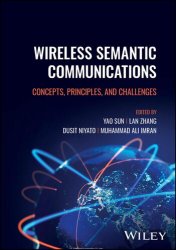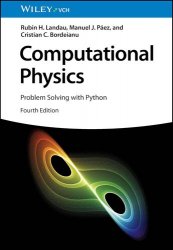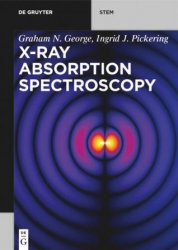 Название: Wireless Semantic Communications: Concepts, Principles, and Challenges
Название: Wireless Semantic Communications: Concepts, Principles, and ChallengesАвтор: Yao Sun, Lan Zhang, Dusit Niyato, Muhammad Ali Imran
Издательство: Wiley
Год: 2024
Страниц: 218
Язык: английский
Формат: pdf
Размер: 10.1 MB
Understand the cutting-edge technology of semantic communications and its growing applications.
Semantic communications constitute a revolution in wireless technology, combining semantic theory with wireless communication. In a semantic communication, essential semantic information is encoded at the source, drastically reducing the required data usage, and then decoded at the destination in such a way that all key information is recovered, even if transmission is damaged or incomplete. Enhancing the correspondence between background knowledge at source and destination can drive the data usage requirement even lower, producing ultra-efficient information exchanges with ultra-low semantic ambiguity.
Wireless Semantic Communications offers a comprehensive overview of this groundbreaking field, its development, and its future application. Beginning with an introduction to semantic communications and its foundational principles, the book then proceeds to cover transceiver design and methods, before discussing use cases and future developments. The result is an indispensable resource for understanding the future of wireless communication.
Wireless Semantic Communications readers will also find:
Analysis of transceiver optimization methods and resource management for semantic communication
Detailed discussion of topics including semantic encoding and decoding, Shannon information theory, and many more
A team of editors with decades of combined experience in the study of wireless communications
In detail, the book covers the following aspects:
(1) Principles and fundamentals of semantic communication.
(2) Transceiver design of semantic communications.
(3) Resource management in semantic communication networks.
(4) Semantic communication applications to vertical industries and some typical communication
scenarios.
Chapter 1 delves into the transceiver design for semantic communications. Specifically, we first summarize established designs for key components in semantic communications, with a key focus on the knowledge base and semantic encoders/decoders crucial for single-user semantic communications. Our discussion then extends to multiuser SC, specifically emphasizing the synergy between various multiple-access schemes and semantic communications, including orthogonal multiple access (OMA), space-division multiple access (SDMA), non-orthogonal multiple access (NOMA), rate-splitting multiple access (RSMA), and model-division multiple access (MDMA). In the end, we explore various applications of semantic communications and analyze the potential alterations in transceiver design required for these applications.
Chapter 2 studies semantic communications from a networking perspective, particularly focusing on the upper layer. Our primary objective is to investigate optimal wireless resource management strategies within the semantic communications-enabled network (SC-Net) to enhance overall network performance in a semantics-aware manner. This entails addressing the unique challenge of ensuring background knowledge alignment between multiple mobile users (MUs) and multitier base stations (BSs).
Chapter 3 innovatively proposes the transformation theory of the semantic domain–spatial domain, projecting the knowledge graph onto a three-dimensional tensor in the spatial domain. By mapping the entity’s semantic ambiguity with the intensity of discrete points, the knowledge graph is reconstructed from background knowledge libraries and three-dimensional tensors at the receiving end. Additionally, this chapter proposes a graph-to-graph semantic similarity (GGSS) metric based on graph optimal transport theory to evaluate the similarity of semantic information before and after transmission, as well as a semantic-level image-to-image semantic similarity (IISS) metric that aligns with human perception. Finally, we demonstrate the effectiveness and rationality of the framework through simulations.
Chapter 4 first introduces the problem that neural networks in semantic communication are very vulnerable to adversarial attacks, then proposes robust semantic communication systems for image and speech transmission. Meanwhile, this chapter discusses the privacy issue caused by the difference of knowledge bases between transmitter and receiver in semantic communication and proposes a knowledge discrepancy-oriented privacy protection (KDPP) method for semantic communication to reduce the risk of privacy leakage while retaining high data utility.
Chapter 5 investigates the means of knowledge learning in semantic communication with a particular focus on the utilization of Knowledge Graphs (KGs). Specifically, we first review existing efforts that combine semantic communication with knowledge learning. Furthermore, we investigate the possibility of integration with large language models (LLMs) for data augmentation, offering additional perspective into the potential implementation means of semantic communication.
...
Chapter 9 discusses the method of leveraging large language model (LLM) to assist semantic communication systems. Specifically, this chapter first discusses leveraging LLM to define the semantic loss of communications, based on which a signal-shaping method is proposed to minimize the semantic loss for semantic communications with a few message candidates.
Chapter 10 explores cutting-edge advancements in RIS for semantic communication. It delves into three pivotal areas: optimizing beamforming in RIS-aided systems for enhanced communication in complex digital environments like the Metaverse; employing physical layer strategies for robust privacy protection in semantic communication systems; and leveraging Deep Learning for advanced interpreting and prioritizing data and encoding and decoding semantic transmission in wireless communications.
Wireless Semantic Communications is ideal for electrical and computing engineers and researchers, as well as industry professionals working in wireless communications.
Скачать Wireless Semantic Communications: Concepts, Principles, and Challenges
[related-news] [/related-news]
Комментарии 0
Комментариев пока нет. Стань первым!















